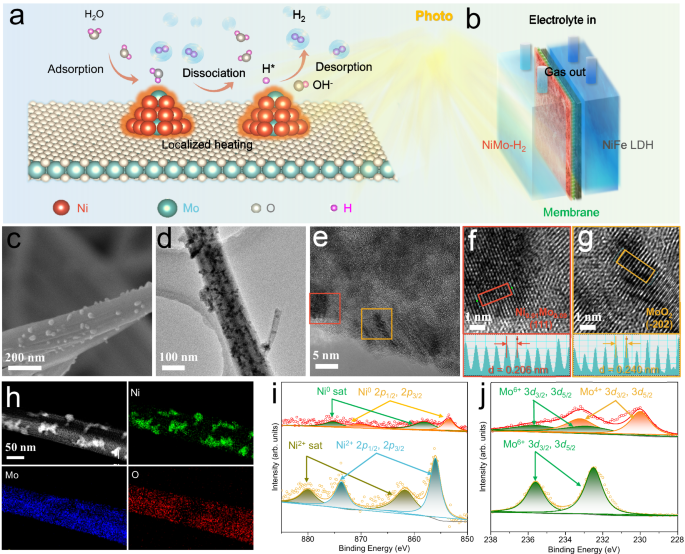Innovations in Photothermal-Promoted Alkaline Seawater Hydrogen Production
Key Ideas
- Water/seawater electrolysis is a zero-carbon-emission pathway for green hydrogen production, but it requires catalysts to reduce overpotential and sustain large current densities.
- Challenges in seawater electrolysis include catalyst structural collapse, low conductivity, and the need for rational catalyst design to overcome energy consumption issues.
- Innovations in photothermal materials and electrolyzer design show promise for accelerating catalytic reactions in seawater electrolysis, offering solutions for sustainable hydrogen production.
- A hierarchical NiMo-H2 catalyst with bimetallic nanoparticles on a nanorod matrix has been developed, demonstrating effective photothermal-promoted alkaline seawater hydrogen evolution.
Hydrogen is a crucial element in the transition to a low-carbon society due to its versatility in various applications. Water or seawater electrolysis, powered by renewable energy, is a vital pathway for green hydrogen production, with a focus on seawater electrolysis gaining attention for its inexhaustible resource reserve. However, this process requires catalysts to reduce overpotential and sustain high current densities, presenting challenges such as structural collapse and low conductivity.
Recent advancements have concentrated on catalyst design optimization, yet innovations in external energy utilization and electrolyzer design are essential for efficient hydrogen production. Utilizing photothermal energy in coastal areas with abundant solar resources shows potential for promoting catalytic reactions without increasing energy consumption. The synthesis of a NiMo-H2 catalyst with bimetallic nanoparticles on a nanorod matrix demonstrates effective photothermal-promoted alkaline seawater hydrogen evolution. This catalyst maintains nanoparticle size for full exposure to the electrolyte, offers high water adsorption and dissociation capabilities, and exhibits good light harvesting and photothermal conversion.
The rational design of a photothermal electrolyzer is crucial for managing thermal diffusion and avoiding rapid heat loss, which can significantly enhance the efficiency of photothermal-promoted seawater electrolysis. By addressing challenges related to solar energy absorption, heat conversion, and thermal management, the development of efficient photothermal electrolyzers could revolutionize sustainable hydrogen production from seawater.
Topics
Electrolyzer
Renewable Energy
Energy Efficiency
Research
Clean Technology
Catalysts
Electrolysis
Sustainable Development
Seawater
Latest News
